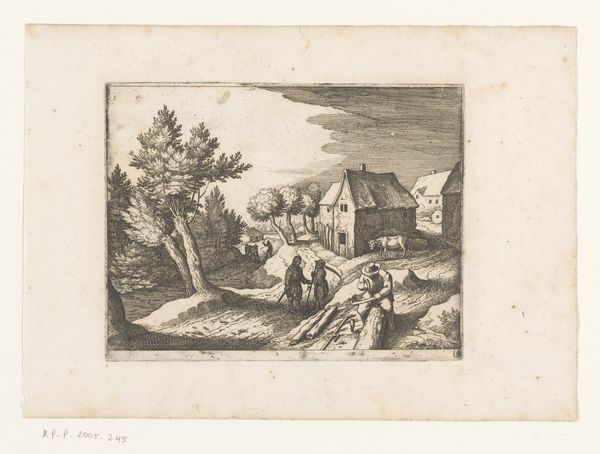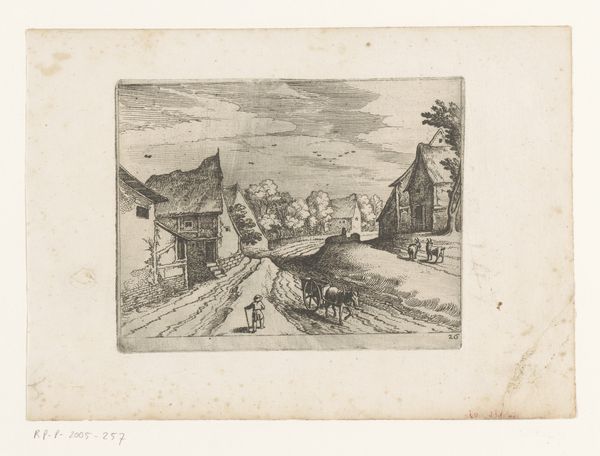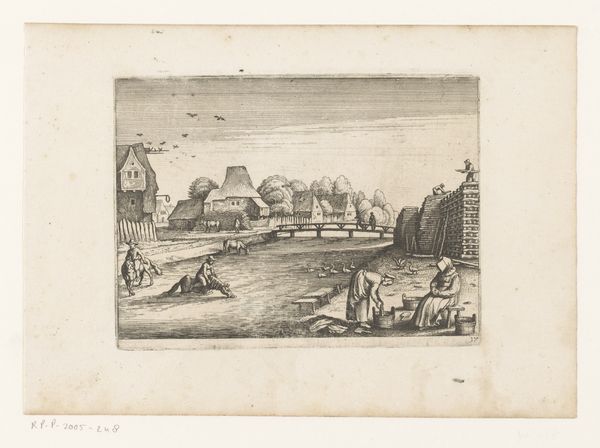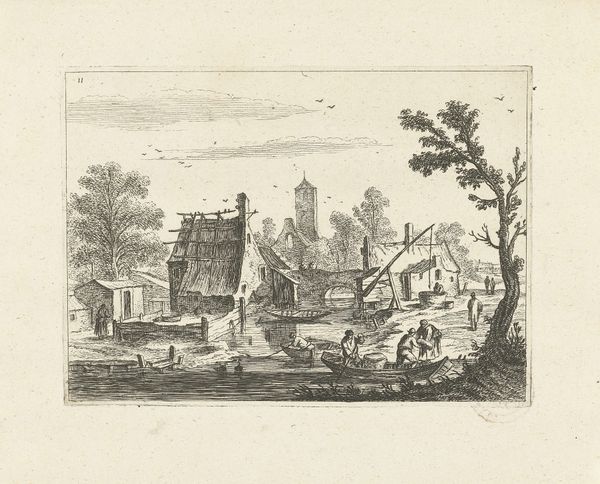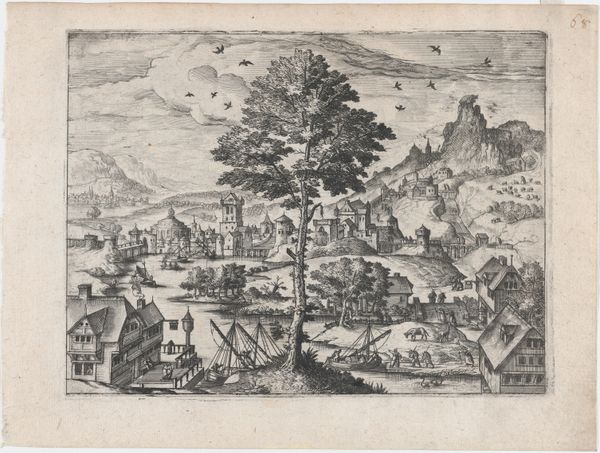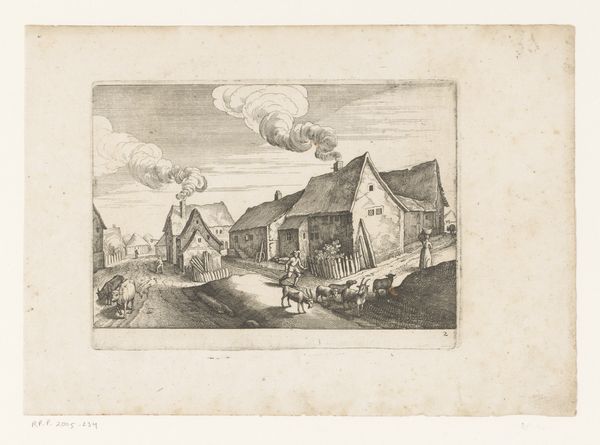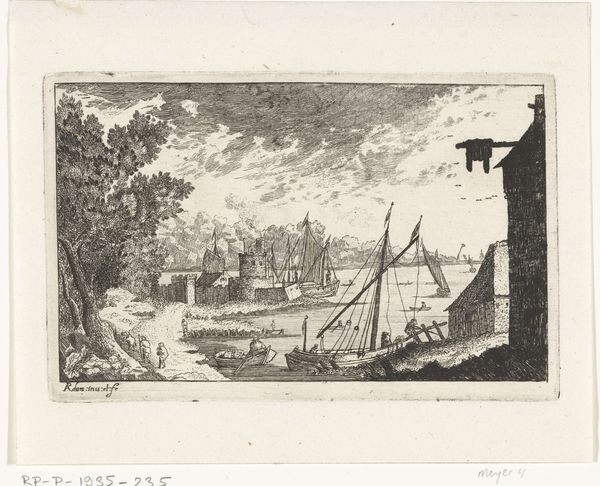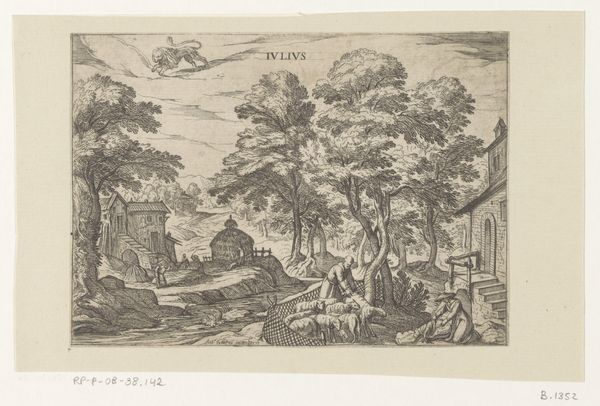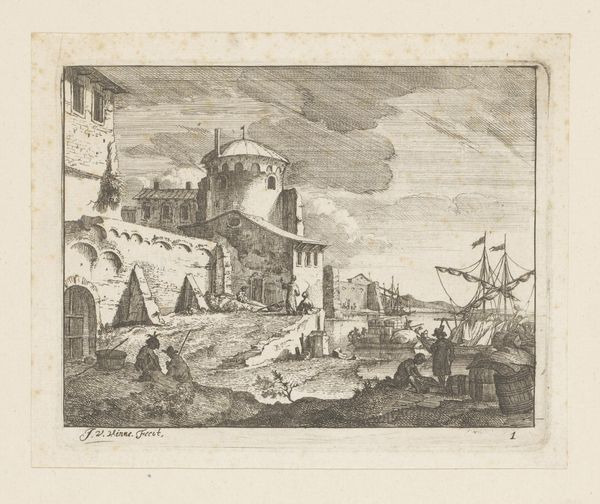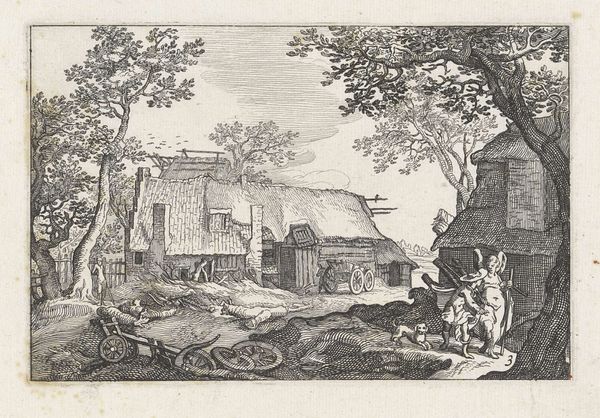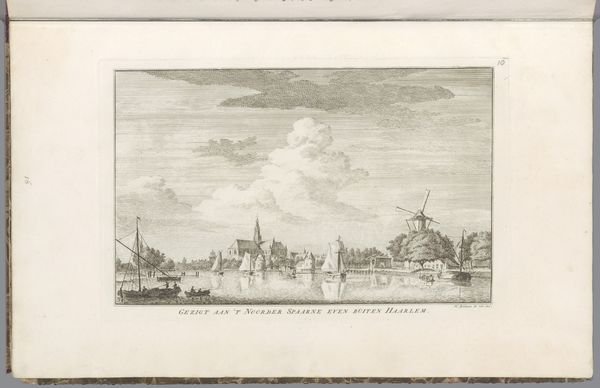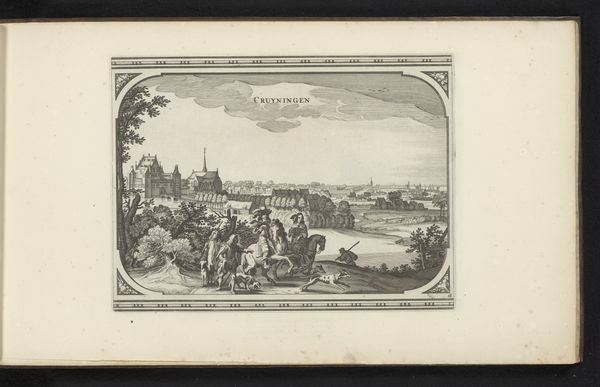
print, etching
#
baroque
#
dutch-golden-age
# print
#
etching
#
landscape
#
genre-painting
Dimensions: height 123 mm, width 165 mm
Copyright: Rijks Museum: Open Domain
Editor: This etching, "Dorpsgezicht met twee vrouwen en een kraaiende haan" or "Village Scene with Two Women and a Crowing Rooster" by Matthäus Merian, from 1620, offers a detailed glimpse into 17th-century life. I’m struck by how it captures a seemingly ordinary moment with such intricacy. What social commentary can we extract from it? Curator: It's a deceptive image. It appears to present a picturesque view of rural life, but look closer. Consider the labor of women, foregrounded in the composition. Are they romanticized or represented realistically? How does this depiction reflect the socioeconomic roles enforced upon women during the Dutch Golden Age? Think about the rooster, too, its crowing announcing male dominance, perhaps a subtle commentary on the patriarchal structure underpinning this "peaceful" village. Editor: I hadn't considered the rooster as symbolic. It really places a focus on that aspect, doesn't it? So you're suggesting this image may be less of a neutral observation and more of a subtle critique of societal power dynamics? Curator: Precisely. Art doesn't exist in a vacuum. The Dutch Golden Age, while a time of immense wealth and artistic innovation, was built on colonial exploitation and strict social hierarchies. Merian, through seemingly benign imagery, invites us to consider who benefits from this prosperity and at whose expense. What does it mean to idealize "rural life" when that life is shaped by gendered labour and entrenched social structures? Editor: It's fascinating to rethink this in terms of gender and class. I was focused on the "peaceful village" narrative. Curator: It's easy to be drawn into that narrative. But by interrogating the visual cues – the prominent labor of women, the assertive rooster – we begin to unpack the complex social fabric of the time. Think of art history as a conversation between the artwork and the socio-political landscape in which it was created, but equally how the modern viewer interprets its nuances through contemporary understanding. Editor: I’ll definitely look at landscapes differently now, questioning what they silently reveal about the human condition. Curator: Exactly. Question everything.
Comments
No comments
Be the first to comment and join the conversation on the ultimate creative platform.
